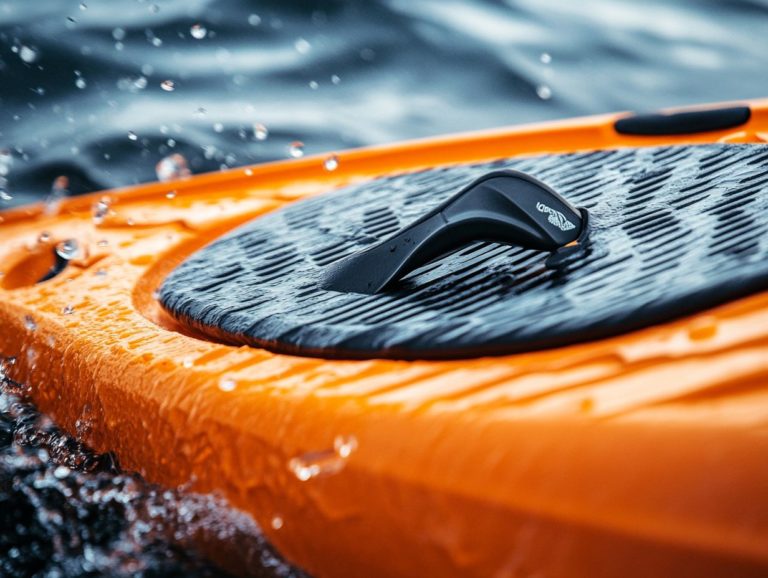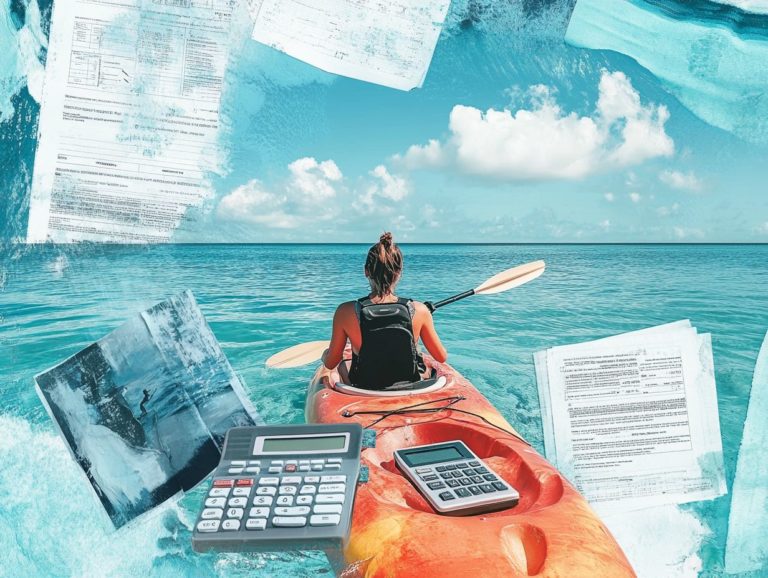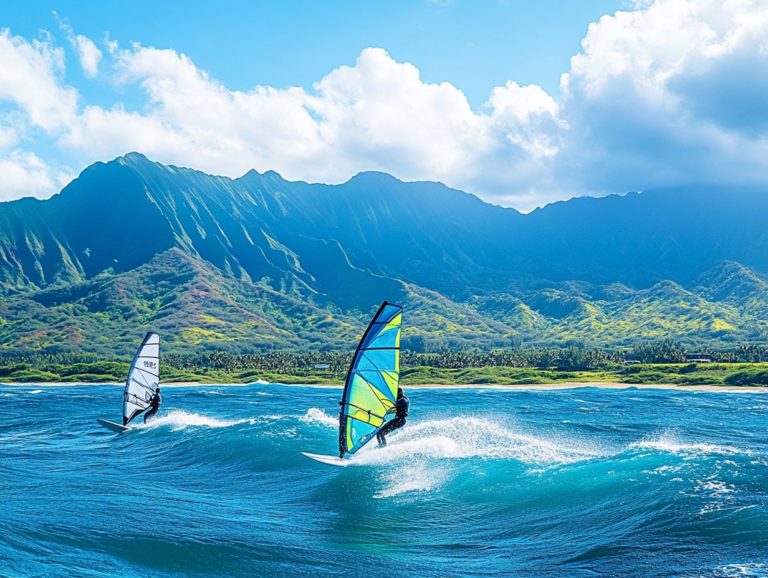Understanding Water Safety Rules for Kids
Drowning stands as a leading cause of unintentional injury among children, underscoring the critical need for water safety education in today’s world.
In this article, you’ll explore essential water safety rules specifically designed for kids. These rules cover best practices for pools, beaches, and natural bodies of water. You’ll also learn effective supervision strategies and the vital importance of teaching children how to communicate during emergencies.
The article highlights the benefits of swimming lessons, demonstrating how they empower children to navigate water with confidence. Discover the ways you can ensure your little ones remain safe while enjoying their time in the water!
Contents
- Key Takeaways:
- The Importance of Teaching Water Safety to Kids
- Basic Water Safety Rules for Kids
- Supervision and Communication
- Teaching Kids to Swim
- Frequently Asked Questions
- What are the basic water safety rules kids should know?
- Why is it important for kids to understand water safety rules?
- At what age should kids start learning about water safety?
- What should kids do if they see someone in trouble while swimming?
- What are some important water safety rules for boating?
- How can parents reinforce water safety rules with their kids?
Key Takeaways:
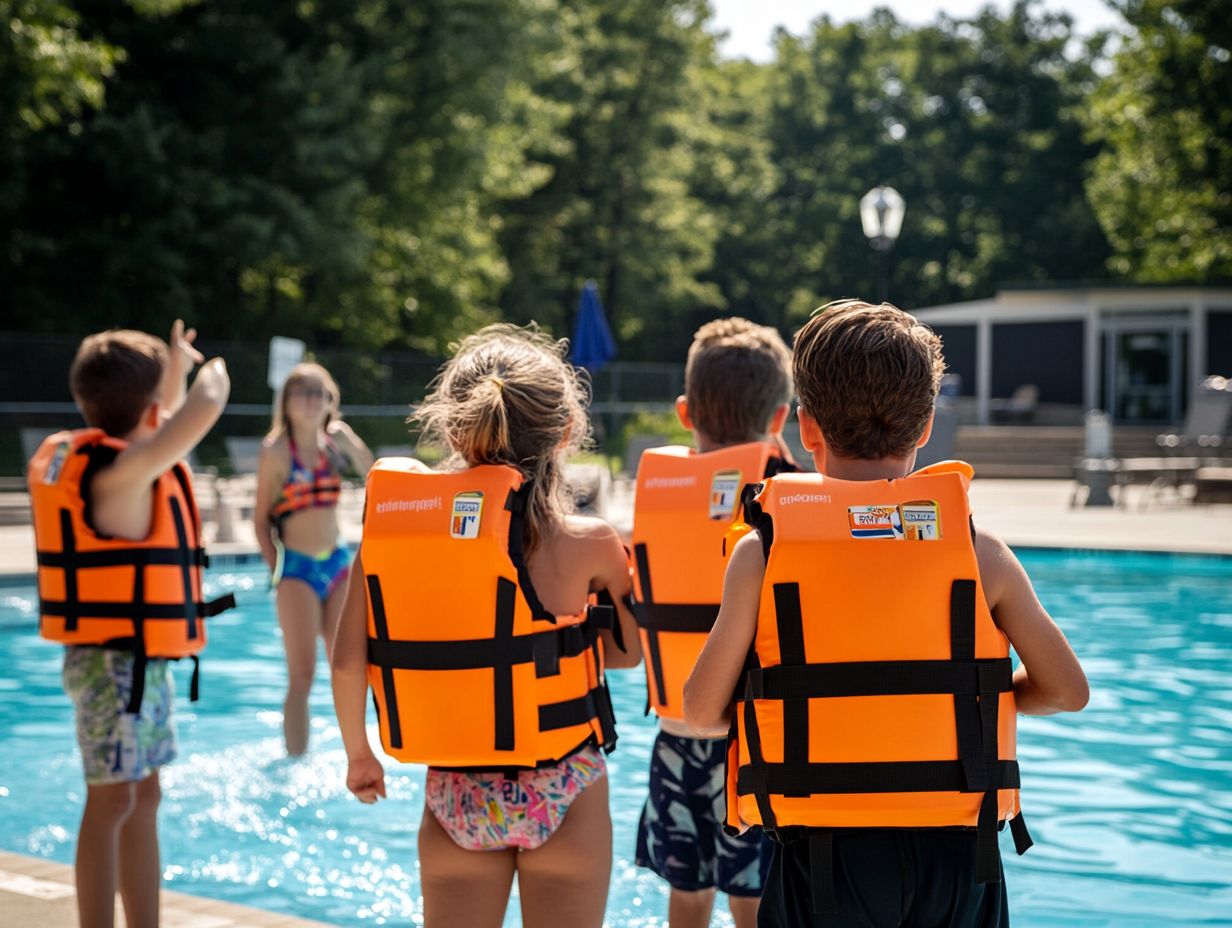
- Teaching water safety is crucial to prevent drowning incidents, which are a leading cause of death for kids, especially at water parks and swimming pools.
- Basic rules for pools, beaches, and natural bodies of water are essential for kids to understand and follow, including guidelines for beach safety and recognizing ocean currents.
- Supervision and communication are key in ensuring kids’ safety in the water. Teaching swim lessons at a young age can greatly reduce the risk of drowning and provide numerous benefits for kids.
The Importance of Teaching Water Safety to Kids
Educating children about water safety is important in preventing drowning incidents, a leading cause of unintentional deaths among kids, particularly in regions like Florida where swimming pools are abundant. This knowledge not only equips them with vital swimming skills but also helps them develop a sense of responsibility and awareness regarding water conditions.
Whether it s swimming pools, lakes and ponds, or the ocean, understanding the inherent dangers is crucial. Children need to be aware of risks posed by jellyfish or the Portuguese man-of-war. By grasping key safety tips and the significance of adult supervision, especially during instances of waves or sudden storms, children can enjoy water activities while significantly reducing risks.
Caregivers must prioritize water safety education to ensure their enjoyment and safety in aquatic environments, particularly at beaches where first aid and emergency numbers should be readily available.
Statistics on Drowning Incidents
Drowning statistics reveal a sobering truth: children are particularly vulnerable. Incidents most commonly occur in environments like swimming pools and beaches, particularly during peak seasons at water parks.
In fact, according to the CDC, drowning stands as the second leading cause of unintentional injury death among children ages 1 to 14. This emphasizes the importance of CPR training (which stands for Cardiopulmonary Resuscitation training) and quick responses from caregivers. Nearly 50% of these heart-wrenching incidents take place in swimming pools, while lakes and ponds and oceans pose significant risks as well, particularly due to hidden hazards like ice or underwater currents.
Caregivers must know that most drowning incidents happen when a child isn t expected to be in the water. This underscores the urgent need for heightened vigilance, especially in garden ponds. By implementing effective drowning prevention strategies such as constant supervision and teaching crucial safety tips families can significantly mitigate these risks, ensuring a safer aquatic experience for their children.
Basic Water Safety Rules for Kids
- Implement fundamental water safety rules for children, allowing them to engage in water play without the risk of drowning. Wearing protective gear like life jackets and water wings is essential.
- Emphasize the importance of supervision. Ensure that kids swim with adults and refrain from running near water.
- Teach children to understand the conditions of any body of water before diving in, especially in unfamiliar settings.
- Provide appropriate protective footwear and ensure that children are well-versed in basic safety precautions, particularly when playing near lakes and ponds.
This ensures they can have fun safely while enjoying their experiences at swimming pools, lakes and ponds, and beaches without compromising their safety.
At the Pool
Regarding swimming pools, adhering to specific safety tips can truly make a significant difference in preventing drowning among children. Always ensure that proper supervision is maintained whenever kids are in or around the pool. Consider using life jackets or water wings for added safety, especially for less experienced swimmers, to promote a culture of drowning prevention.
Understanding and enforcing pool rules can create a safer environment for everyone involved, especially when children are present. Actively engage your children in discussions about pool etiquette and safety protocols to ensure they grasp the potential dangers of strong waves and other hazards.
Enrolling kids in swim lessons is another crucial step. This not only builds their confidence in the water but also teaches them vital skills for drowning prevention and cardiopulmonary resuscitation (CPR).
As a caregiver, it’s important to recognize the value of CPR training and first aid knowledge, which can be life-saving during emergencies. This knowledge can truly save lives, especially when facing challenges like injuries due to jellyfish stings or other aquatic hazards.
By implementing these layers of safety, your family can enjoy pool time worry-free, basking in peace of mind while being aware of potential dangers like storms and waves.
At the Beach
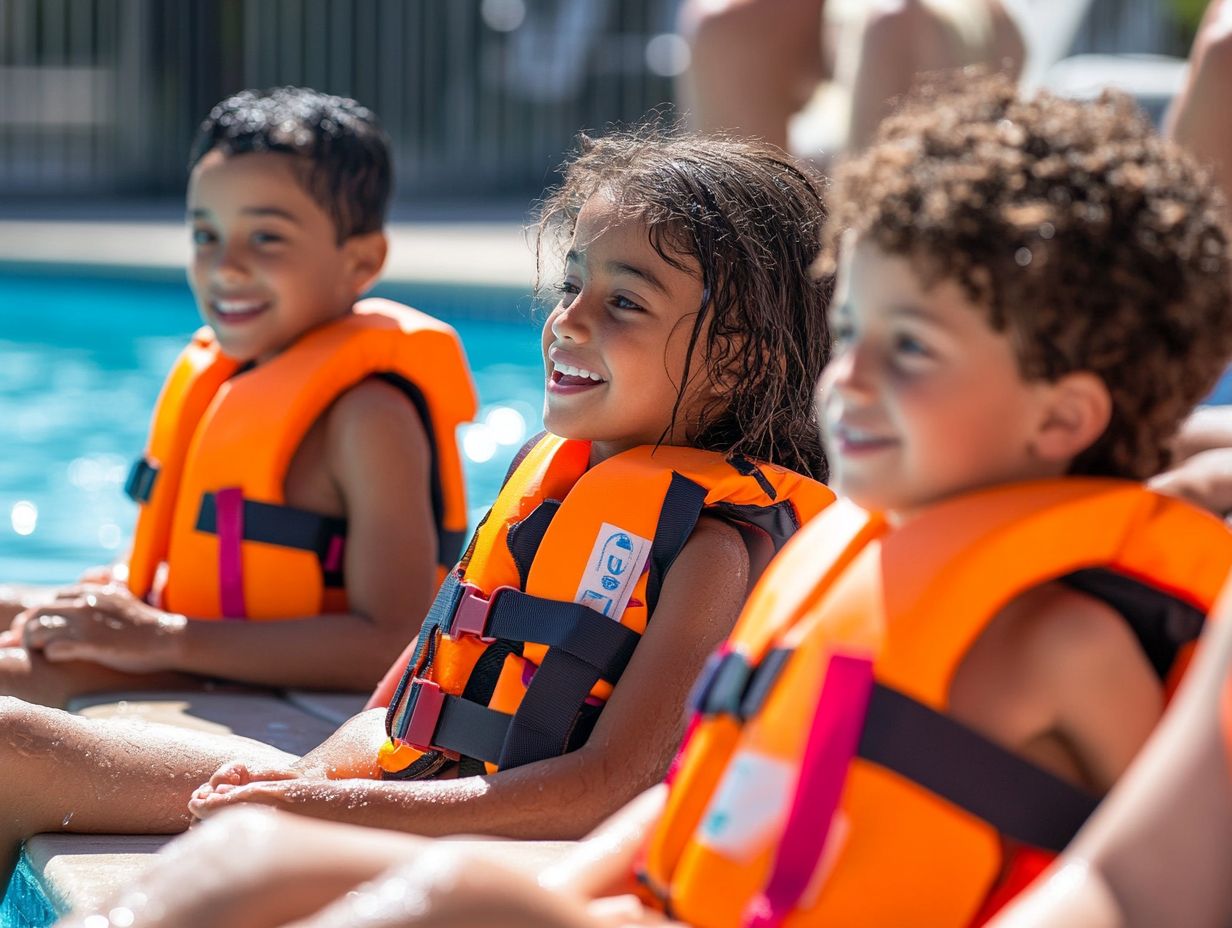
Beach safety becomes especially critical when children are involved, as they face various dangers like strong waves, jellyfish, and the Portuguese man-of-war. Careful supervision rules are essential.
Ensuring their safety demands your diligent supervision and a sharp awareness of the ever-changing ocean conditions that can be quite unpredictable. Educate children on recognizing the signs of dangerous surf and the importance of staying within designated swimming areas, while also explaining the role of lifeguards.
Have emergency numbers at the ready, such as 911 for immediate assistance or local lifeguard stations. This can make a significant difference when every second counts, especially in the case of marine life encounters.
Teach kids how to navigate encounters with marine life, especially with potentially dangerous creatures found in the ocean. Help them understand the importance of keeping a safe distance from jellyfish and recognizing their tentacles, so they can avoid painful stings. Remind them about how to respond to water emergencies.
In Natural Bodies of Water
Natural bodies of water, like lakes and ponds, come with their own set of risks, ranging from hidden currents to unstable ice. It’s crucial to assess water conditions and prioritize safety precautions, especially for the children in your care.
Understanding the water conditions is vital, as these environments can change in the blink of an eye, potentially leading to hazardous situations that require immediate attention. As a parent or guardian, educate both yourself and your children on recognizing warning signs, such as murky water or sudden temperature drops, and knowing when to seek help.
The significance of drown-proofing your children cannot be emphasized enough. Teaching them how to float and swim could very well be a life-saving skill, equipping them with the confidence to manage themselves in swimming pools or ocean settings.
When winter rolls around, the dangers associated with ice can escalate dramatically. Explain these risks to children, especially in areas where they may play near garden ponds. Even a seemingly solid layer can give way under weight.
By adhering to essential safety tips like ensuring life jackets are worn and discouraging unsupervised play near water you can significantly mitigate these risks.
Don’t wait start teaching your kids about water safety today!
Supervision and Communication
Effective supervision and communication are very important when it comes to ensuring water safety for children, especially in busy environments such as water parks. These elements play a crucial role in your ability to prevent drowning incidents.
As a parent or guardian, it’s essential to have open conversations with your children about safety tips and emergency numbers, particularly those that pertain to aquatic emergencies. This preparation equips them to handle potential water-related emergencies, whether it involves encountering dangerous animals or facing sudden shifts in water conditions typical in lakes and ponds.
Effective Ways to Supervise Kids in the Water
Effective supervision strategies are essential for keeping children safe while they enjoy water activities. One of the most important tips is to ensure they always swim with adults, particularly in crowded areas like beaches or swimming pools. This not only safeguards their physical well-being but also boosts their comfort and confidence in the water, reinforcing the need for consistent rules for supervision.
You should maintain constant visual contact with the children, allowing for swift intervention if any situation arises, especially during unpredictable events like waves or storms.
Setting clear and specific rules regarding water entry is key to managing risks effectively, particularly to prevent drowning incidents. Establishing safety precautions such as mandatory swim lessons before diving into water activities reinforces proper techniques and emergency responses. For more information on how to enhance safety, consider learning about best practices for water safety during those fun-filled moments.
Teaching Kids to Communicate in Water Emergencies
Teaching children how to communicate effectively during water emergencies is an essential aspect of their overall water safety education, emphasizing the role of CPR (cardiopulmonary resuscitation) and first aid knowledge. It gives them the power to quickly alert adults when they find themselves in distress.
This skill set includes not only the ability to shout or signal for help but also the awareness to recognize specific situations that may indicate danger, such as prolonged submersion or struggling to stay afloat, which require immediate attention. Comprehensive instruction should cover rules for supervision and the importance of trusted adults, emphasizing that children should never swim alone and should always seek help when necessary.
Incorporating lessons about emergency numbers into everyday conversations can greatly empower youngsters, helping them understand when and how to reach out for help in urgent situations. Such preparation is vital for drowning prevention and nurtures a proactive mindset for handling unexpected incidents in and around water, from beach safety to swimming pool etiquette.
Teaching Kids to Swim
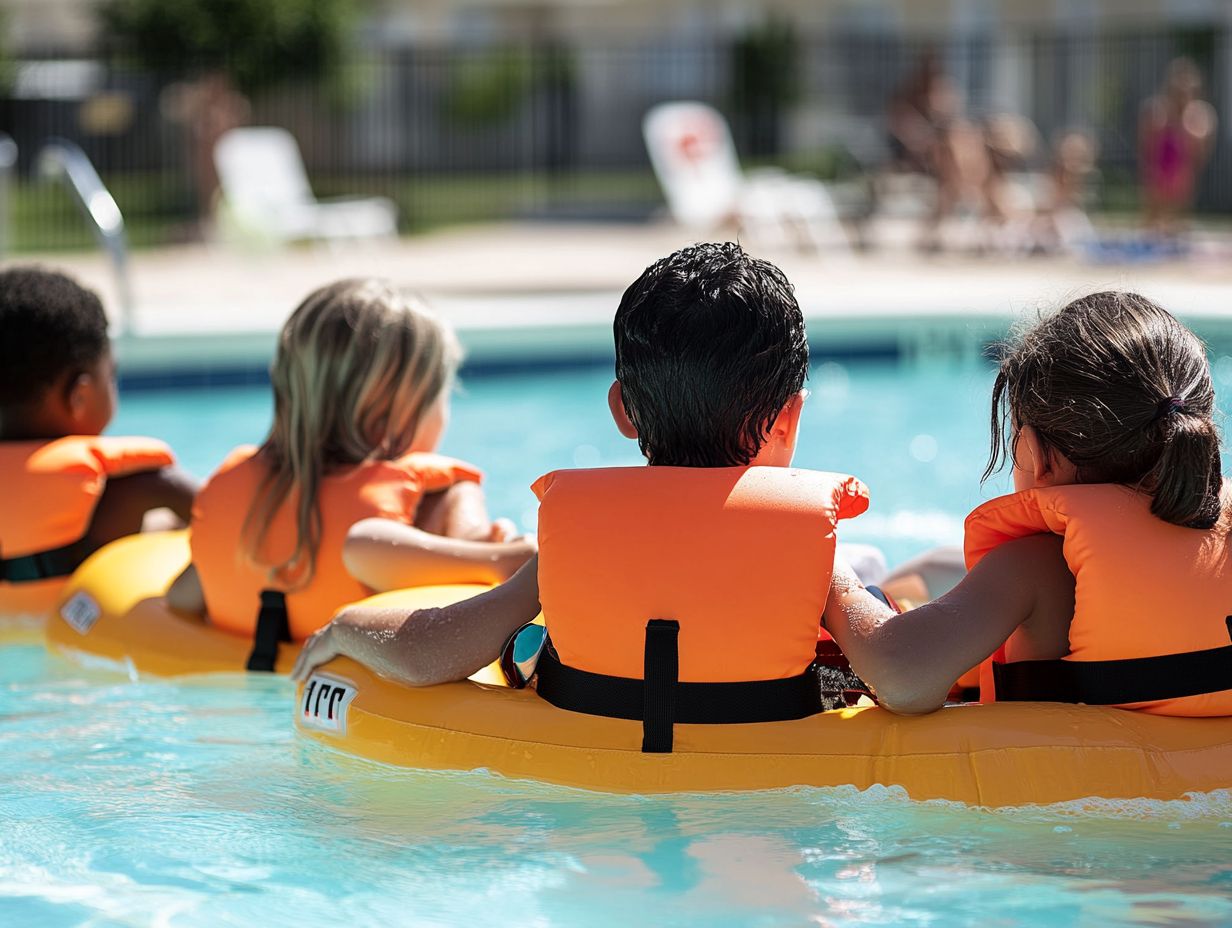
Teaching kids to swim stands out as one of the most effective ways to ensure they are drown-proof, equipping them with the essential skills required to navigate swimming pools and other aquatic environments safely, including water parks.
Beginning structured swim lessons at an early age is crucial. They should blend vital safety tips seamlessly into the curriculum. This approach ensures that children not only learn how to swim but also understand how to respond effectively in emergencies while in the water.
Age-Appropriate Swimming Lessons
Age-appropriate swimming lessons are important for effectively guiding you in teaching your children how to swim while ensuring they grasp safety tips tailored to their developmental stage.
These lessons do more than just focus on essential swimming techniques; they also highlight the significance of child supervision and a comprehensive understanding of water safety. For example, your toddlers might engage in playful water acclimatization (getting comfortable in the water through fun games), while older children can progress to more structured lessons that incorporate lifesaving skills.
As they advance, they’ll learn the importance of wearing protective footwear, crucial for maintaining balance around pool areas. This progressive approach not only builds their confidence in the water but also equips them with the necessary skills to navigate aquatic environments safely as they grow.
Don’t wait! Start teaching your children these vital skills now, so they can enjoy water safely!
Benefits of Learning to Swim
The benefits of learning to swim are truly extensive; it s not just about safety in the water.
Get ready to see your confidence soar while you enjoy water play like never before! These lessons are crucial for helping you stay fit, engaging multiple muscle groups and improving your heart health.
You ll also discover the joy of social interaction, building friendships and enjoying teamwork in a fun, supportive environment. Swimming lessons are essential for preventing drowning, equipping you with vital safety knowledge.
Gaining an understanding of cardiopulmonary resuscitation (CPR), a lifesaving technique used in emergencies, along with various safety precautions during these sessions enhances your awareness and preparedness for any water activities.
Ultimately, the advantages of swim education ripple far beyond the pool, setting you up for a lifetime of fun and safety in the water!
Frequently Asked Questions
What are the basic water safety rules kids should know?
The basic water safety rules kids should know include always swimming with a buddy, staying within designated swim areas, and wearing a life jacket if they are not strong swimmers.
Why is it important for kids to understand water safety rules?
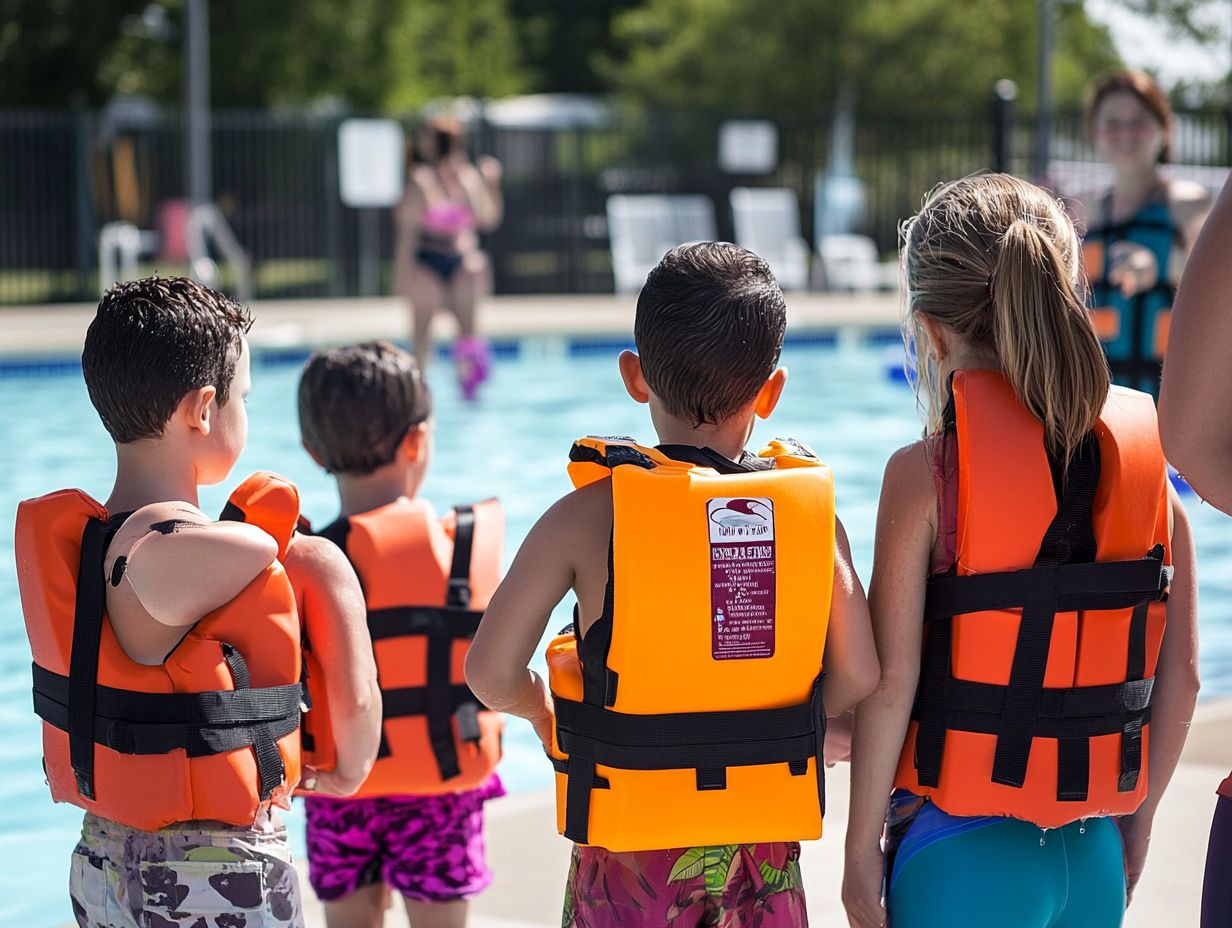
Understanding water safety rules teaches kids how to stay safe while in and around water, which can prevent accidents and save lives.
At what age should kids start learning about water safety?
Kids can start learning about water safety as early as 3 years old. It is important to start teaching them at a young age so they can develop good habits and understanding of water safety.
What should kids do if they see someone in trouble while swimming?
If kids see someone in trouble while swimming, they should immediately call for help from an adult or a lifeguard. They should also not attempt to rescue the person themselves, as it can put them in danger as well.
What are some important water safety rules for boating?
Some important water safety rules for boating include wearing life jackets at all times, following speed limits, and having a designated adult as the driver of the boat.
How can parents reinforce water safety rules with their kids?
Parents can reinforce water safety rules with their kids by setting a good example, having open communication about water safety, and practicing water safety drills and skills together.
Consider enrolling in swimming lessons today or check local resources for more information!


